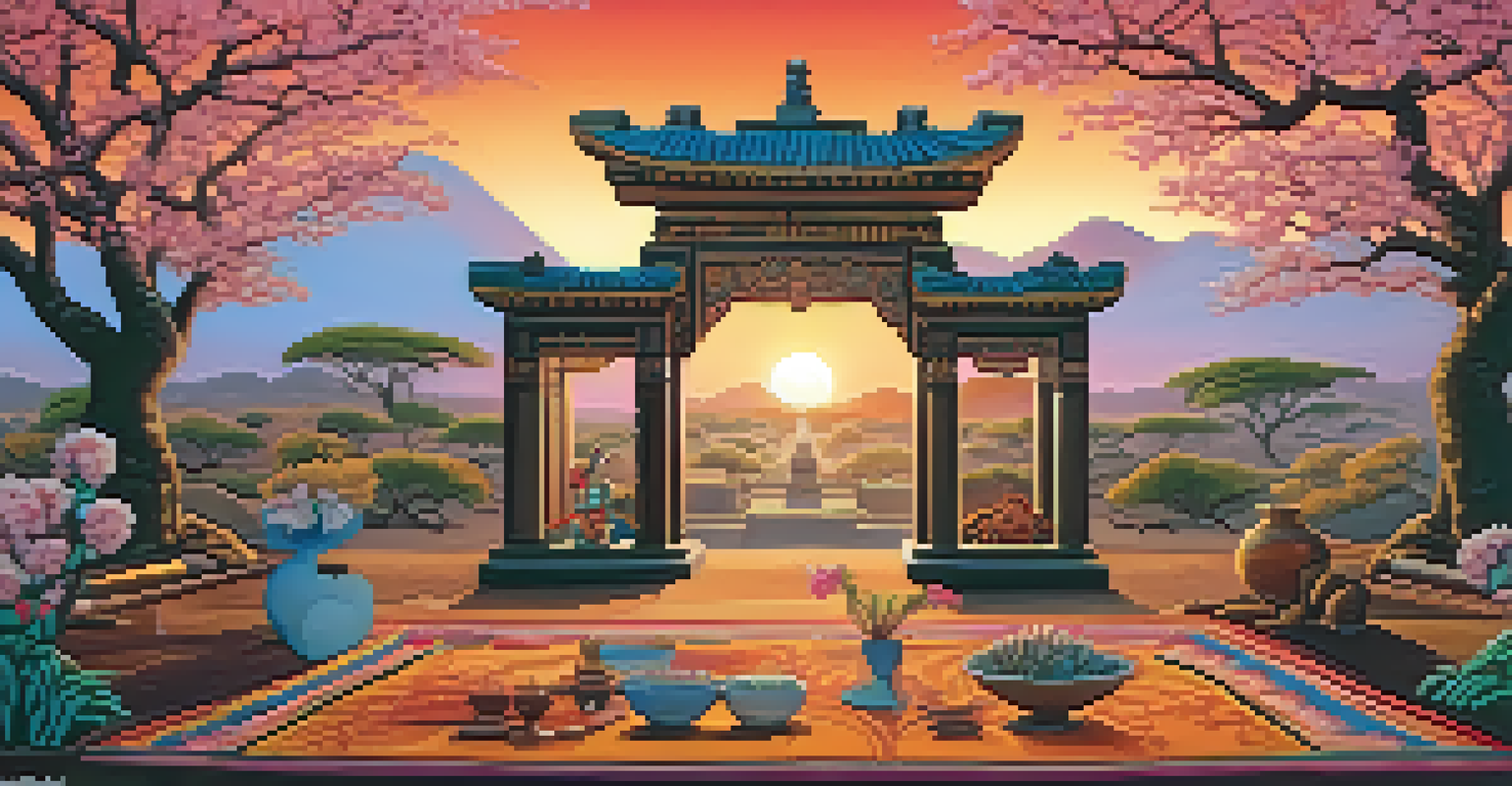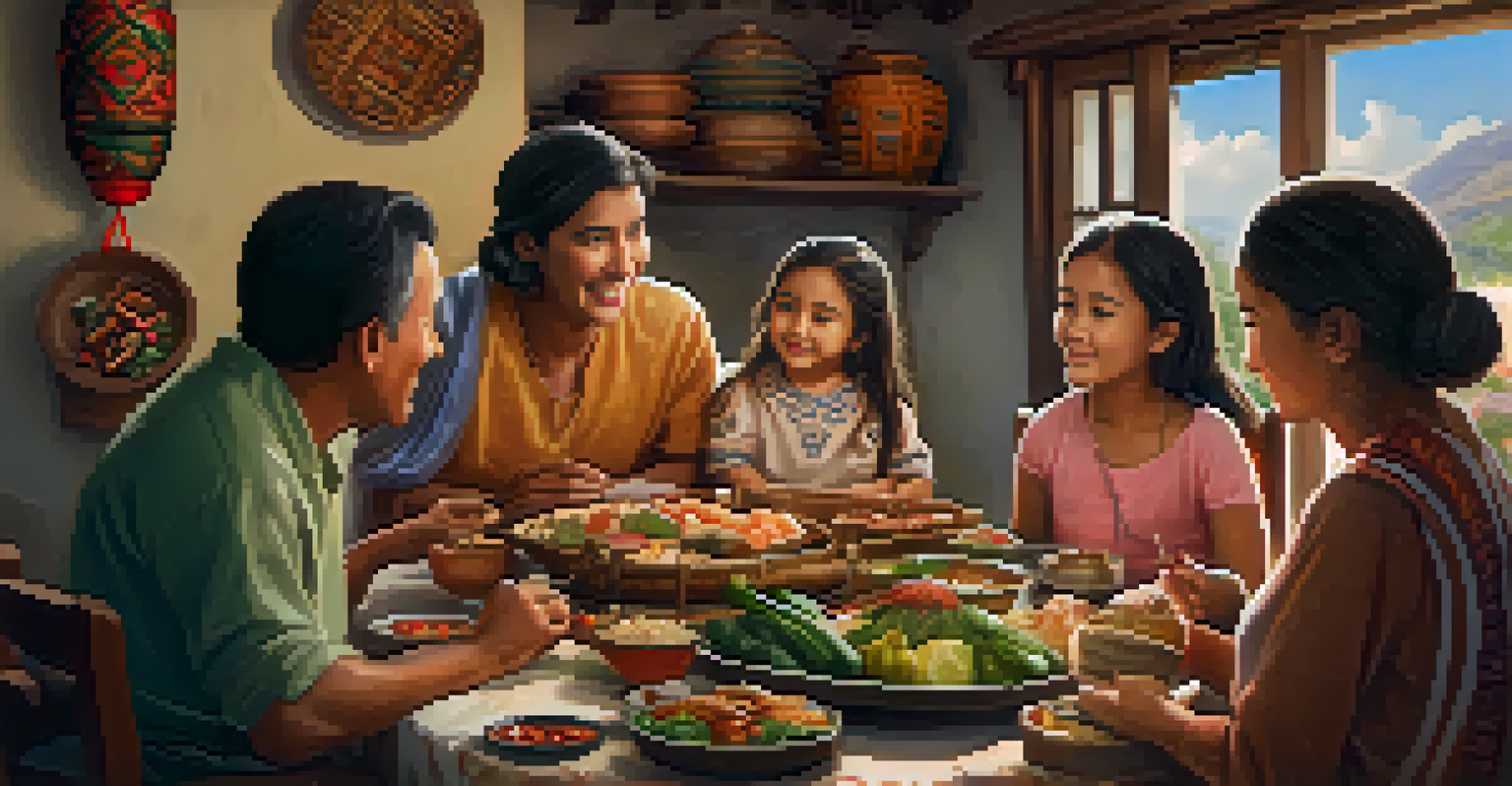The Evolution of Cultural Representation in Animated Films

The Beginnings: Animation and Cultural Myths
Animation has long served as a canvas for storytelling, often drawing from cultural myths and folklore. Early animated films, like those from Disney, predominantly showcased Western narratives, often overlooking the diverse tales from around the world. This narrow focus limited audience perspectives and reinforced stereotypes, creating a disconnect with many cultures. The stories told were not just entertainment; they reflected societal values and cultural identities, or the lack thereof.
Animation is not just a tool for storytelling; it's a powerful medium that shapes cultural perceptions and identities.
For instance, think about Disney's 'Snow White' or 'Cinderella.' These films portrayed idealized versions of femininity and heroism, rooted deeply in Eurocentric value systems. While they are beloved classics, they largely ignored the richness of other cultures and their unique narratives. This exclusion did more than just deprive audiences of variety; it also perpetuated a singular worldview.
As we look back, it's clear that these early representations set the stage for a broader conversation about inclusivity in media. Animated films were not just telling stories; they were shaping perceptions of culture, identity, and even self-worth among young viewers. Recognizing this influence is crucial as we move forward in the evolution of cultural representation.
The Shift: Embracing Diversity in Animation
The late 20th century marked a significant shift in animated films as creators began to embrace diversity and explore new cultural narratives. Films like 'Mulan' and 'The Lion King' began to introduce elements of different cultures, providing a glimpse into their traditions and values. This shift was not just about representation but also about authenticity, as filmmakers sought to tell stories that resonated with the cultures they depicted.

However, this new approach prompted important questions regarding authenticity. Were the filmmakers genuinely capturing the essence of these cultures, or were they merely appropriating elements for commercial gain? This debate highlighted the importance of collaboration with cultural consultants and community representatives to ensure respectful and accurate portrayals. Animation, after all, is a powerful medium that can either uplift or misrepresent.
Animation's Cultural Evolution
Animation has evolved from Eurocentric narratives to embracing diverse stories that celebrate various cultural identities.
As audiences grew more aware of these issues, the demand for authentic representation became louder. Viewers wanted to see their own stories reflected on screen, and this push for diversity began to reshape the landscape of animated films. It became evident that audiences were not just passive consumers; they were active participants in the cultural conversation.
Cultural Representation in the 21st Century
Entering the 21st century, animated films have witnessed a remarkable evolution in cultural representation. With the rise of global connectivity and streaming platforms, diverse stories from around the world have found their way into mainstream media. Films like 'Coco' and 'Raya and the Last Dragon' showcase rich cultural tapestries, celebrating the beauty and complexity of different traditions.
The stories we tell reflect the world we live in, and it’s essential to ensure that all voices are represented in our narratives.
These films go beyond surface-level representation; they dive deep into cultural values, familial bonds, and community dynamics. 'Coco,' for instance, doesn't just feature Mexican culture; it explores the significance of Día de los Muertos, weaving respect and understanding into its narrative. This approach fosters empathy and connection, inviting audiences to appreciate cultures different from their own.
Moreover, the success of these films has demonstrated that there is a market for diverse storytelling. As animated films continue to evolve, they highlight the importance of representation not just for audiences but also for animators and storytellers from varied backgrounds. This shift is crucial in creating a more inclusive industry that values every voice.
Challenges and Missteps in Representation
Despite the progress made in cultural representation, challenges and missteps still persist in the animation industry. Some films have faced backlash for misrepresenting cultures or relying on outdated stereotypes. A prime example is the criticism faced by 'Aladdin' for its portrayal of Arab culture, which many deemed simplistic and offensive.
These missteps often arise from a lack of diverse voices in the creative process, leading to portrayals that may not resonate with or respect the cultures being depicted. It's a stark reminder that representation goes beyond simply including diverse characters; it requires an understanding of the cultural context and nuances. Animators and filmmakers must prioritize authenticity and collaboration to avoid reinforcing harmful stereotypes.
Importance of Authenticity
Ensuring authentic representation in animated films involves collaboration with cultural voices to avoid stereotypes and misrepresentation.
Moreover, these challenges highlight the need for accountability in the industry. Audiences today are more vocal and discerning, demanding that animated films reflect the rich tapestry of human experiences. As we navigate these challenges, it's essential for creators to learn from past mistakes and strive for genuine representation in their storytelling.
The Role of Technology in Enhancing Representation
Advancements in technology have played a pivotal role in enhancing cultural representation in animated films. From sophisticated animation techniques to virtual reality experiences, filmmakers can now create more immersive and visually stunning representations of diverse cultures. For instance, the use of 3D animation has allowed for richer storytelling, enabling animators to depict intricate cultural details that resonate with audiences.
Moreover, technology has democratized the animation industry, providing platforms for underrepresented voices to share their stories. Independent animators can now produce and distribute their works more easily, showcasing cultural narratives that mainstream studios may overlook. This shift not only broadens the variety of stories told but also empowers creators from diverse backgrounds to share their unique perspectives.
As we embrace these technological advancements, it's critical to remember that the heart of storytelling remains the human experience. While technology can enhance representation, authentic storytelling requires a deep understanding of the culture being depicted. The fusion of technology and genuine narratives can lead to groundbreaking animated films that truly celebrate diversity.
The Impact of Globalization on Animated Films
Globalization has significantly influenced the evolution of cultural representation in animated films. As cultures interact and blend, filmmakers have the opportunity to explore hybrid narratives that reflect the interconnectedness of our world. This blending can lead to unique stories that resonate with a global audience while maintaining cultural authenticity.
For example, films like 'Kung Fu Panda' incorporate elements from Chinese culture while appealing to a broad audience through universal themes of self-discovery and perseverance. This globalization of storytelling allows for a richer exchange of ideas and cultural appreciation, fostering a greater understanding among diverse audiences.
Technology's Role in Storytelling
Advancements in technology have enhanced cultural representation in animation, allowing for more immersive and diverse storytelling experiences.
However, this also raises the question of cultural appropriation versus appreciation. It's essential for filmmakers to navigate this fine line carefully, ensuring that they honor the cultures they draw inspiration from. By doing so, they can create animated films that celebrate diversity and promote a deeper understanding of our global community.
Looking Ahead: The Future of Cultural Representation in Animation
As we look to the future, the potential for cultural representation in animated films is both exciting and promising. With a growing emphasis on diversity and inclusion, we can expect to see even more authentic narratives that reflect the complexities of our world. Filmmakers are increasingly recognizing the importance of telling stories that resonate with a diverse audience, paving the way for a richer cinematic landscape.
Furthermore, the rise of new voices in animation promises to reshape the industry. Young creators from various cultural backgrounds are stepping into the spotlight, bringing fresh perspectives and innovative storytelling techniques. This trend not only enriches the animation world but also inspires the next generation to embrace and celebrate their own cultures.

Ultimately, the evolution of cultural representation in animated films serves as a reminder of the power of storytelling. As we continue to share and celebrate diverse narratives, we can foster empathy, understanding, and connection among audiences worldwide. The future of animation is bright, and with it comes the promise of stories that truly reflect the richness of our shared human experience.